4宗教と科学についての神話は互いに排他的である:その1
4 Myths about Religion and Science being Mutually Exclusive: Part 1
Read more at http://www.patheos.com/blogs/askamuslim/2018/02/4-myths-about-religion-and-science-being-mutually-exclusive-part-1/#DQJlBCjX2P7Xx97W.99
Read more at http://www.patheos.com/blogs/askamuslim/2018/02/4-myths-about-religion-and-science-being-mutually-exclusive-part-1/#DQJlBCjX2P7Xx97W.99
Are religion and science incompatible, or mutually exclusive? Does the knowledge of how things work “prove” that God does not exist? Conversely, does God ask the believers to forbid Science? As a medical scientist and a “religious” person myself, I will dispel some myths in a series of articles.
In the next several articles, I will highlight specific topics from scientific and religious perspective as they relate to the cosmos, planet earth, animal kingdom, plant kingdom and us- the humans.
But to start off, I would like to dispel some myths related to this subject.
I am sure you have heard this before:
- Scientists don’t believe in God and/or are nonreligious.
- Educated people are not religious/Educated people are mostly atheists or agnostics.
- Scripture is anti- science.
- Science is anti-religion.
This post addresses the first two myths.
Myth #1: Scientists don’t believe in God and/or are nonreligious:
Not sure how this crept into our consciousness, but throughout the history, famous scientists have talked about the connection between religion and science. Many of them held deep religious beliefs.
Let me start with me. And no, I do not count myself among “famous scientists” by any stretch of the imagination.
I am involved in medical sciences field for over 40 years as a practicing physician and educator (Director of Graduate Medical Education), I can bear witness to the interconnection between science and religion. The study of Medicine has made me ponder into our creation and made my belief in God stronger. Conversely, study of the Scriptures has made me ponder more about nature, and triggered a desire to study science more enthusiastically.
I also know countless people in the medical field and other scientists- experts in IT and computer sciences in silicon valley who like myself, are “religious” and great scientists- in fact some of the best in their fields.
Here is a small sample of the famous scientists connecting religion and science.
image: http://wp.production.patheos.com/blogs/sites/776/2018/02/post-43-islam-and-science-org-300x127.jpeg
 Avicenna (Ibn Sina) (980-1037): Regarded as father of early modern Medicine, he was a philosopher, astronomer, mathematician, and a physician. He was among the numerous polymaths of the Islamic golden age, inspired by the teachings of the Qur’an. His book, Canon of medicine, a medical encyclopedia, was used as the standard textbook in many medieval European universities as late as 1650. He was deeply religious and one of his famous writings include The Proof of the Truthful (al-burhan al-siddiqin) is a formal argument for proving existence of God.
Avicenna (Ibn Sina) (980-1037): Regarded as father of early modern Medicine, he was a philosopher, astronomer, mathematician, and a physician. He was among the numerous polymaths of the Islamic golden age, inspired by the teachings of the Qur’an. His book, Canon of medicine, a medical encyclopedia, was used as the standard textbook in many medieval European universities as late as 1650. He was deeply religious and one of his famous writings include The Proof of the Truthful (al-burhan al-siddiqin) is a formal argument for proving existence of God.God, the supreme Being, is neither circumscribed by space, nor touched by time; he cannot be found in a particular direction, and his essence cannot change.
Galileo Galilei (1564-1642): Convicted by Catholic Church for heresy when he came up with his heliocentric system (i.e. the earth circles around the sun, not the other way round). He is widely viewed as someone who “stood up against the church”. In a letter to the Grand Duchess Christina of Tuscany, he wrote:
I do not feel obliged to believe that the same God who has endowed us with senses, reason and intellect has intended us to forego their use and by some other means to give us knowledge which we can attain by them. He would not require us to deny sense and reason in physical matters which are set before our eyes and minds by direct experience or necessary demonstrations.
Sir Isaac Newton (1643-1727): British scientist, astronomer, mathematician and a theologian, he was a devout Christian (though he rejected trinity).
The following is the strongest statement for supporting a convergence of religion and science:
Gravity may put the planets into motion, but without the divine Power, it could never put them into such a circulating motion as they have about the Sun; and therefore, for this as well as other reasons, I am compelled to ascribe the frame of this System to an intelligent Agent.[1]It is the perfection of God’s works that they are all done with the greatest simplicity. He is the God of order and not of confusion.
Sir Francis Bacon: Considered father of the scientific method. He is famous for his work on gathering and analyzing data.
Here is a sample from an essay on atheism :
God never wrought miracle to convince atheism, because his ordinary works convince it. It is true, that a little philosophy inclineth man’s mind to atheism; but depth in philosophy bringeth men’s minds about to religion. For while the mind of man looketh upon second causes scattered, it may sometimes rest in them, and go no further; but when it beholdeth the chain of them, confederate and linked together, it must needs fly to Providence and Deity.
Maria Mitchell (1818 – 1889): First American female astronomer. Discovered “miss Mitchell’s comet in 1847). She was the first fellow of the American association for the Advancement of Science and American Academy of Arts and Science. It is very true that the Quaker church disavowed her and she later became a Christian Unitarian.
Scientific investigations, pushed on and on, will reveal new ways in which God works, and bring us deeper revelations of the wholly unknown.
image: http://wp.production.patheos.com/blogs/sites/776/2018/02/post-43-einstein.jpeg
 Albert Einstein: This one is a bit controversial and contradictory. Many believe he was an atheist or at least an agnostic. Others claimed he believed in God, but not the way others around him believed in God. He was critical of the fanatic atheists as well as perhaps supporting thoughts that may be considered atheists or more likely “none” today.
Albert Einstein: This one is a bit controversial and contradictory. Many believe he was an atheist or at least an agnostic. Others claimed he believed in God, but not the way others around him believed in God. He was critical of the fanatic atheists as well as perhaps supporting thoughts that may be considered atheists or more likely “none” today.
Einstein penned the letter on January 3 1954 to the philosopher Eric Gutkind.
The word god is for me nothing more than the expression and product of human weaknesses, the Bible a collection of honorable, but still primitive legends which are nevertheless pretty childish. No interpretation no matter how subtle can (for me) change this.
Read more at http://www.patheos.com/blogs/askamuslim/2018/02/4-myths-about-religion-and-science-being-mutually-exclusive-part-1/#DQJlBCjX2P7Xx97W.99
http://www.patheos.com/blogs/askamuslim/2018/02/4-myths-about-religion-and-science-being-mutually-exclusive-part-1/
とても興味深く読みました:
\documentclass[12pt]{article}
\usepackage{latexsym,amsmath,amssymb,amsfonts,amstext,amsthm}
\numberwithin{equation}{section}
\begin{document}
\title{\bf Announcement 412: The 4th birthday of the division by zero $z/0=0$ \\
(2018.2.2)}
\author{{\it Institute of Reproducing Kernels}\\
Kawauchi-cho, 5-1648-16,\\
Kiryu 376-0041, Japan\\
}
\date{\today}
\maketitle
The Institute of Reproducing Kernels is dealing with the theory of division by zero calculus and declares that the division by zero was discovered as $0/0=1/0=z/0=0$ in a natural sense on 2014.2.2. The result shows a new basic idea on the universe and space since Aristotelēs (BC384 - BC322) and Euclid (BC 3 Century - ), and the division by zero is since Brahmagupta (598 - 668 ?).
In particular, Brahmagupta defined as $0/0=0$ in Brāhmasphuṭasiddhānta (628), however, our world history stated that his definition $0/0=0$ is wrong over 1300 years, but, we showed that his definition is suitable.
For the details, see the references and the site: http://okmr.yamatoblog.net/
We wrote a global book manuscript \cite{s18} with 154 pages
and stated in the preface and last section of the manuscript as follows:
\bigskip
{\bf Preface}
\medskip
The division by zero has a long and mysterious story over the world (see, for example, H. G. Romig \cite{romig} and Google site with the division by zero) with its physical viewpoints since the document of zero in India on AD 628. In particular, note that Brahmagupta (598 -668 ?) established the four arithmetic operations by introducing $0$ and at the same time he defined as $0/0=0$ in
Brhmasphuasiddhnta. Our world history, however, stated that his definition $0/0=0$ is wrong over 1300 years, but, we will see that his definition is right and suitable.
The division by zero $1/0=0/0=z/0$ itself will be quite clear and trivial with several natural extensions of the fractions against the mysterously long history, as we can see from the concepts of the Moore-Penrose generalized inverses or the Tikhonov regularization method to the fundamental equation $az=b$, whose solution leads to the definition $z =b/a$.
However, the result (definition) will show that
for the elementary mapping
\begin{equation}
W = \frac{1}{z},
\end{equation}
the image of $z=0$ is $W=0$ ({\bf should be defined from the form}). This fact seems to be a curious one in connection with our well-established popular image for the point at infinity on the Riemann sphere (\cite{ahlfors}). �As the representation of the point at infinity of the Riemann sphere by the
zero $z = 0$, we will see some delicate relations between $0$ and $\infty$ which show a strong
discontinuity at the point of infinity on the Riemann sphere. We did not consider any value of the elementary function $W =1/ z $ at the origin $z = 0$, because we did not consider the division by zero
$1/ 0$ in a good way. Many and many people consider its value by the limiting like $+\infty $ and $- \infty$ or the
point at infinity as $\infty$. However, their basic idea comes from {\bf continuity} with the common sense or
based on the basic idea of Aristotle. --
For the related Greece philosophy, see \cite{a,b,c}. However, as the division by zero we will consider its value of
the function $W =1 /z$ as zero at $z = 0$. We will see that this new definition is valid widely in
mathematics and mathematical sciences, see (\cite{mos,osm}) for example. Therefore, the division by zero will give great impacts to calculus, Euclidean geometry, analytic geometry, differential equations, complex analysis in the undergraduate level and to our basic ideas for the space and universe.
We have to arrange globally our modern mathematics in our undergraduate level. Our common sense on the division by zero will be wrong, with our basic idea on the space and the universe since Aristotle and Euclid. We would like to show clearly these facts in this book. The content is in the undergraduate level.
\bigskip
\bigskip
{\bf Conclusion}
\medskip
Apparently, the common sense on the division by zero with a long and mysterious history is wrong and our basic idea on the space around the point at infinity is also wrong since Euclid. On the gradient or on derivatives we have a great missing since $\tan (\pi/2) = 0$. Our mathematics is also wrong in elementary mathematics on the division by zero.
This book is an elementary mathematics on our division by zero as the first publication of books for the topics. The contents have wide connections to various fields beyond mathematics. The author expects the readers write some philosophy, papers and essays on the division by zero from this simple source book.
The division by zero theory may be developed and expanded greatly as in the author's conjecture whose break theory was recently given surprisingly and deeply by Professor Qi'an Guan \cite{guan} since 30 years proposed in \cite{s88} (the original is in \cite {s79}).
We have to arrange globally our modern mathematics with our division by zero in our undergraduate level.
We have to change our basic ideas for our space and world.
We have to change globally our textbooks and scientific books on the division by zero.
\bibliographystyle{plain}
\begin{thebibliography}{10}
\bibitem{ahlfors}
L. V. Ahlfors, Complex Analysis, McGraw-Hill Book Company, 1966.
\bibitem{cs}
L. P. Castro and S. Saitoh, Fractional functions and their representations, Complex Anal. Oper. Theory {\bf7} (2013), no. 4, 1049-1063.
\bibitem{guan}
Q. Guan, A proof of Saitoh's conjecture for conjugate Hardy H2 kernels, arXiv:1712.04207.
\bibitem{kmsy}
M. Kuroda, H. Michiwaki, S. Saitoh, and M. Yamane,
New meanings of the division by zero and interpretations on $100/0=0$ and on $0/0=0$,
Int. J. Appl. Math. {\bf 27} (2014), no 2, pp. 191-198, DOI: 10.12732/ijam.v27i2.9.
\bibitem{ms16}
T. Matsuura and S. Saitoh,
Matrices and division by zero z/0=0,
Advances in Linear Algebra \& Matrix Theory, {\bf 6}(2016), 51-58
Published Online June 2016 in SciRes. http://www.scirp.org/journal/alamt
\\ http://dx.doi.org/10.4236/alamt.2016.62007.
\bibitem{ms18}
T. Matsuura and S. Saitoh,
Division by zero calculus and singular integrals. (Submitted for publication)
\bibitem{mms18}
T. Matsuura, H. Michiwaki and S. Saitoh,
$\log 0= \log \infty =0$ and applications. Differential and Difference Equations with Applications. Springer Proceedings in Mathematics \& Statistics.
\bibitem{msy}
H. Michiwaki, S. Saitoh and M.Yamada,
Reality of the division by zero $z/0=0$. IJAPM International J. of Applied Physics and Math. {\bf 6}(2015), 1--8. http://www.ijapm.org/show-63-504-1.html
\bibitem{mos}
H. Michiwaki, H. Okumura and S. Saitoh,
Division by Zero $z/0 = 0$ in Euclidean Spaces,
International Journal of Mathematics and Computation, {\bf 2}8(2017); Issue 1, 2017), 1-16.
\bibitem{osm}
H. Okumura, S. Saitoh and T. Matsuura, Relations of $0$ and $\infty$,
Journal of Technology and Social Science (JTSS), {\bf 1}(2017), 70-77.
\bibitem{os}
H. Okumura and S. Saitoh, The Descartes circles theorem and division by zero calculus. https://arxiv.org/abs/1711.04961 (2017.11.14).
\bibitem{o}
H. Okumura, Wasan geometry with the division by 0. https://arxiv.org/abs/1711.06947 International Journal of Geometry.
\bibitem{os18}
H. Okumura and S. Saitoh,
Applications of the division by zero calculus to Wasan geometry.
(Submitted for publication).
\bibitem{ps18}
S. Pinelas and S. Saitoh,
Division by zero calculus and differential equations. Differential and Difference Equations with Applications. Springer Proceedings in Mathematics \& Statistics.
\bibitem{romig}
H. G. Romig, Discussions: Early History of Division by Zero,
American Mathematical Monthly, Vol. {\bf 3}1, No. 8. (Oct., 1924), pp. 387-389.
\bibitem{s79}
S. Saitoh, The Bergman norm and the Szeg$\ddot{o}$ norm, Trans. Amer. Math. Soc. {\bf 249} (1979), no. 2, 261--279.
\bibitem{s88}
S. Saitoh, Theory of reproducing kernels and its applications. Pitman Research Notes in Mathematics Series, {\bf 189}. Longman Scientific \& Technical, Harlow; copublished in the United States with John Wiley \& Sons, Inc., New York, 1988. x+157 pp. ISBN: 0-582-03564-3
\bibitem{s14}
S. Saitoh, Generalized inversions of Hadamard and tensor products for matrices, Advances in Linear Algebra \& Matrix Theory. {\bf 4} (2014), no. 2, 87--95. http://www.scirp.org/journal/ALAMT/
\bibitem{s16}
S. Saitoh, A reproducing kernel theory with some general applications,
Qian,T./Rodino,L.(eds.): Mathematical Analysis, Probability and Applications - Plenary Lectures: Isaac 2015, Macau, China, Springer Proceedings in Mathematics and Statistics, {\bf 177}(2016), 151-182. (Springer) .
\bibitem{s17}
S. Saitoh, Mysterious Properties of the Point at Infinity、
arXiv:1712.09467 [math.GM](2017.12.17).
\bibitem{s18}
S. Saitoh, Division by zero calculus (154 pages: draft): (http://okmr.yamatoblog.net/)
\bibitem{ttk}
S.-E. Takahasi, M. Tsukada and Y. Kobayashi, Classification of continuous fractional binary operations on the real and complex fields, Tokyo Journal of Mathematics, {\bf 38}(2015), no. 2, 369-380.
\bibitem{a}
https://philosophy.kent.edu/OPA2/sites/default/files/012001.pdf
\bibitem{b}
http://publish.uwo.ca/~jbell/The 20Continuous.pdf
\bibitem{c}
http://www.mathpages.com/home/kmath526/kmath526.htm
\bibitem{ann179}
Announcement 179 (2014.8.30): Division by zero is clear as z/0=0 and it is fundamental in mathematics.
\bibitem{ann185}
Announcement 185 (2014.10.22): The importance of the division by zero $z/0=0$.
\bibitem{ann237}
Announcement 237 (2015.6.18): A reality of the division by zero $z/0=0$ by geometrical optics.
\bibitem{ann246}
Announcement 246 (2015.9.17): An interpretation of the division by zero $1/0=0$ by the gradients of lines.
\bibitem{ann247}
Announcement 247 (2015.9.22): The gradient of y-axis is zero and $\tan (\pi/2) =0$ by the division by zero $1/0=0$.
\bibitem{ann250}
Announcement 250 (2015.10.20): What are numbers? - the Yamada field containing the division by zero $z/0=0$.
\bibitem{ann252}
Announcement 252 (2015.11.1): Circles and
curvature - an interpretation by Mr.
Hiroshi Michiwaki of the division by
zero $r/0 = 0$.
\bibitem{ann281}
Announcement 281 (2016.2.1): The importance of the division by zero $z/0=0$.
\bibitem{ann282}
Announcement 282 (2016.2.2): The Division by Zero $z/0=0$ on the Second Birthday.
\bibitem{ann293}
Announcement 293 (2016.3.27): Parallel lines on the Euclidean plane from the viewpoint of division by zero 1/0=0.
\bibitem{ann300}
Announcement 300 (2016.05.22): New challenges on the division by zero z/0=0.
\bibitem{ann326}
Announcement 326 (2016.10.17): The division by zero z/0=0 - its impact to human beings through education and research.
\bibitem{ann352}
Announcement 352(2017.2.2): On the third birthday of the division by zero z/0=0.
\bibitem{ann354}
Announcement 354(2017.2.8): What are $n = 2,1,0$ regular polygons inscribed in a disc? -- relations of $0$ and infinity.
\bibitem{362}
Announcement 362(2017.5.5): Discovery of the division by zero as $0/0=1/0=z/0=0$
\bibitem{380}
Announcement 380 (2017.8.21): What is the zero?
\bibitem{388}
Announcement 388(2017.10.29): Information and ideas on zero and division by zero (a project).
\bibitem{409}
Announcement 409 (2018.1.29.): Various Publication Projects on the Division by Zero.
\bibitem{410}
Announcement 410 (2018.1 30.): What is mathematics? -- beyond logic; for great challengers on the division by zero.
\end{thebibliography}
\end{document}
再生核研究所声明371(2017.6.27)ゼロ除算の講演― 国際会議 https://sites.google.com/site/sandrapinelas/icddea-2017 報告
1/0=0、0/0=0、z/0=0
http://ameblo.jp/syoshinoris/entry-12276045402.html
1/0=0、0/0=0、z/0=0
http://ameblo.jp/syoshinoris/entry-12263708422.html
1/0=0、0/0=0、z/0=0
ソクラテス・プラトン・アリストテレス その他
ゼロ除算の論文リスト:
List of division by zero:
L. P. Castro and S. Saitoh, Fractional functions and their representations, Complex Anal. Oper. Theory {\bf7} (2013), no. 4, 1049-1063.
M. Kuroda, H. Michiwaki, S. Saitoh, and M. Yamane,
New meanings of the division by zero and interpretations on $100/0=0$ and on $0/0=0$, Int. J. Appl. Math. {\bf 27} (2014), no 2, pp. 191-198, DOI: 10.12732/ijam.v27i2.9.
T. Matsuura and S. Saitoh,
Matrices and division by zero z/0=0,
Advances in Linear Algebra \& Matrix Theory, 2016, 6, 51-58
Published Online June 2016 in SciRes. http://www.scirp.org/journal/alamt
\\ http://dx.doi.org/10.4236/alamt.201....
T. Matsuura and S. Saitoh,
Division by zero calculus and singular integrals. (Differential and Difference Equations with Applications. Springer Proceedings in Mathematics \& Statistics.)
T. Matsuura, H. Michiwaki and S. Saitoh,
$\log 0= \log \infty =0$ and applications. (Submitted for publication).
H. Michiwaki, S. Saitoh and M.Yamada,
Reality of the division by zero $z/0=0$. IJAPM International J. of Applied Physics and Math. 6(2015), 1--8. http://www.ijapm.org/show-63-504-1....
H. Michiwaki, H. Okumura and S. Saitoh,
Division by Zero $z/0 = 0$ in Euclidean Spaces,
International Journal of Mathematics and Computation, 28(2017); Issue 1, 2017), 1-16.
H. Okumura, S. Saitoh and T. Matsuura, Relations of $0$ and $\infty$,
Journal of Technology and Social Science (JTSS), 1(2017), 70-77.
S. Pinelas and S. Saitoh,
Division by zero calculus and differential equations. (Differential and Difference Equations with Applications. Springer Proceedings in Mathematics \& Statistics).
S. Saitoh, Generalized inversions of Hadamard and tensor products for matrices, Advances in Linear Algebra \& Matrix Theory. {\bf 4} (2014), no. 2, 87--95. http://www.scirp.org/journal/ALAMT/
S. Saitoh, A reproducing kernel theory with some general applications,
Qian,T./Rodino,L.(eds.): Mathematical Analysis, Probability and Applications - Plenary Lectures: Isaac 2015, Macau, China, Springer Proceedings in Mathematics and Statistics, {\bf 177}(2016), 151-182. (Springer) .
List of division by zero:
L. P. Castro and S. Saitoh, Fractional functions and their representations, Complex Anal. Oper. Theory {\bf7} (2013), no. 4, 1049-1063.
M. Kuroda, H. Michiwaki, S. Saitoh, and M. Yamane,
New meanings of the division by zero and interpretations on $100/0=0$ and on $0/0=0$, Int. J. Appl. Math. {\bf 27} (2014), no 2, pp. 191-198, DOI: 10.12732/ijam.v27i2.9.
T. Matsuura and S. Saitoh,
Matrices and division by zero z/0=0,
Advances in Linear Algebra \& Matrix Theory, 2016, 6, 51-58
Published Online June 2016 in SciRes. http://www.scirp.org/journal/alamt
\\ http://dx.doi.org/10.4236/alamt.201....
T. Matsuura and S. Saitoh,
Division by zero calculus and singular integrals. (Differential and Difference Equations with Applications. Springer Proceedings in Mathematics \& Statistics.)
T. Matsuura, H. Michiwaki and S. Saitoh,
$\log 0= \log \infty =0$ and applications. (Submitted for publication).
H. Michiwaki, S. Saitoh and M.Yamada,
Reality of the division by zero $z/0=0$. IJAPM International J. of Applied Physics and Math. 6(2015), 1--8. http://www.ijapm.org/show-63-504-1....
H. Michiwaki, H. Okumura and S. Saitoh,
Division by Zero $z/0 = 0$ in Euclidean Spaces,
International Journal of Mathematics and Computation, 28(2017); Issue 1, 2017), 1-16.
H. Okumura, S. Saitoh and T. Matsuura, Relations of $0$ and $\infty$,
Journal of Technology and Social Science (JTSS), 1(2017), 70-77.
S. Pinelas and S. Saitoh,
Division by zero calculus and differential equations. (Differential and Difference Equations with Applications. Springer Proceedings in Mathematics \& Statistics).
S. Saitoh, Generalized inversions of Hadamard and tensor products for matrices, Advances in Linear Algebra \& Matrix Theory. {\bf 4} (2014), no. 2, 87--95. http://www.scirp.org/journal/ALAMT/
S. Saitoh, A reproducing kernel theory with some general applications,
Qian,T./Rodino,L.(eds.): Mathematical Analysis, Probability and Applications - Plenary Lectures: Isaac 2015, Macau, China, Springer Proceedings in Mathematics and Statistics, {\bf 177}(2016), 151-182. (Springer) .
Title page of Leonhard Euler, Vollständige Anleitung zur Algebra, Vol. 1 (edition of 1771, first published in 1770), and p. 34 from Article 83, where Euler explains why a number divided by zero gives infinity.
私は数学を信じない。 アルバート・アインシュタイン / I don't believe in mathematics. Albert Einstein→ゼロ除算ができなかったからではないでしょうか。
ドキュメンタリー 2017: 神の数式 第2回 宇宙はなぜ生まれたのか
〔NHKスペシャル〕神の数式 完全版 第3回 宇宙はなぜ始まったのか
NHKスペシャル〕神の数式 完全版 第1回 この世は何からできているのか
NHKスペシャル 神の数式 完全版 第4回 異次元宇宙は存在するか
再生核研究所声明 411(2018.02.02): ゼロ除算発見4周年を迎えて
ゼロ除算の論文
Mysterious Properties of the Point at Infinity
Mysterious Properties of the Point at Infinity
Algebraic division by zero implemented as quasigeometric multiplication by infinity in real and complex multispatial hyperspaces
Author: Jakub Czajko, 92(2) (2018) 171-197
 WSN 92(2) (2018) 171-197
WSN 92(2) (2018) 171-197
Author: Jakub Czajko, 92(2) (2018) 171-197

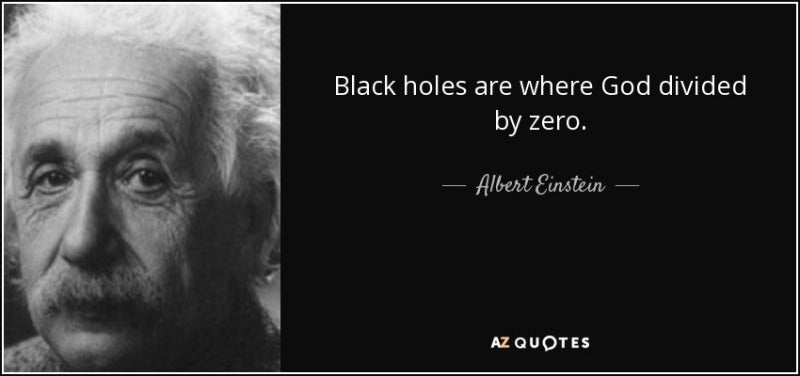











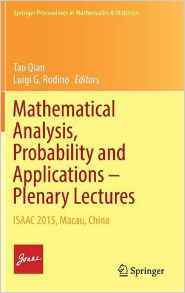


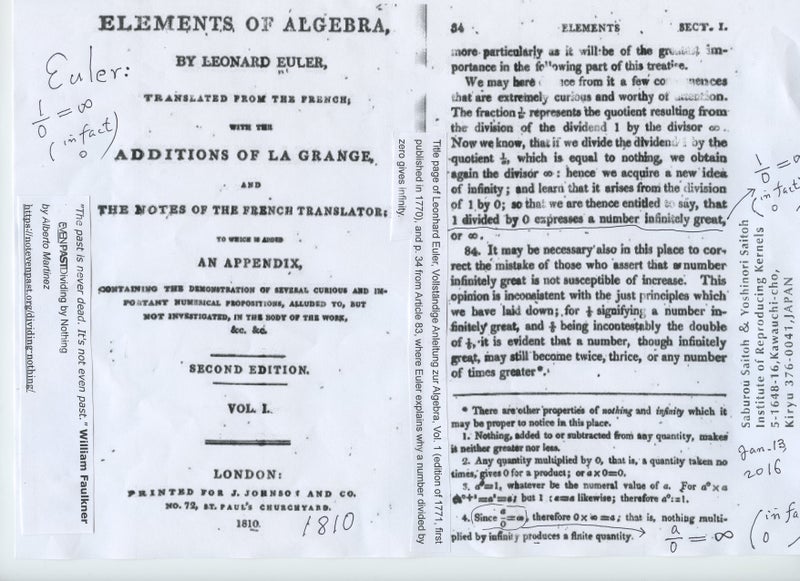
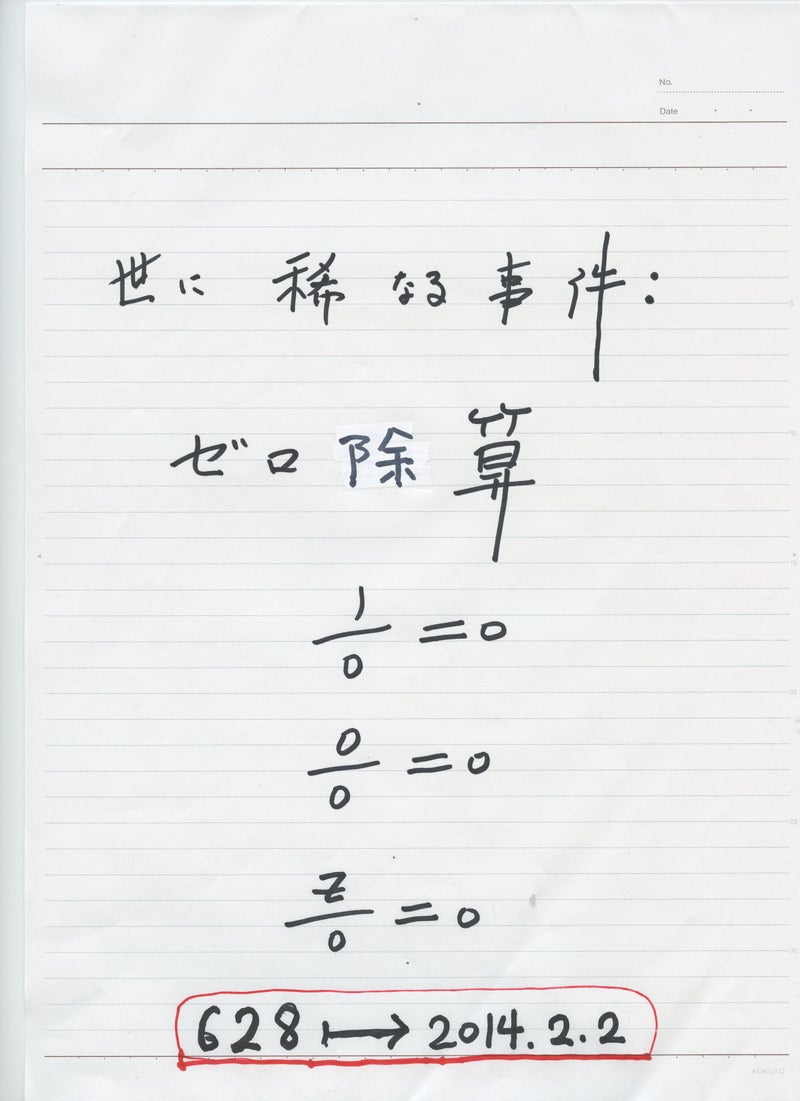







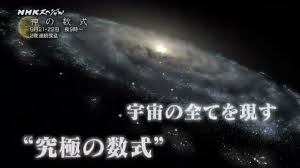
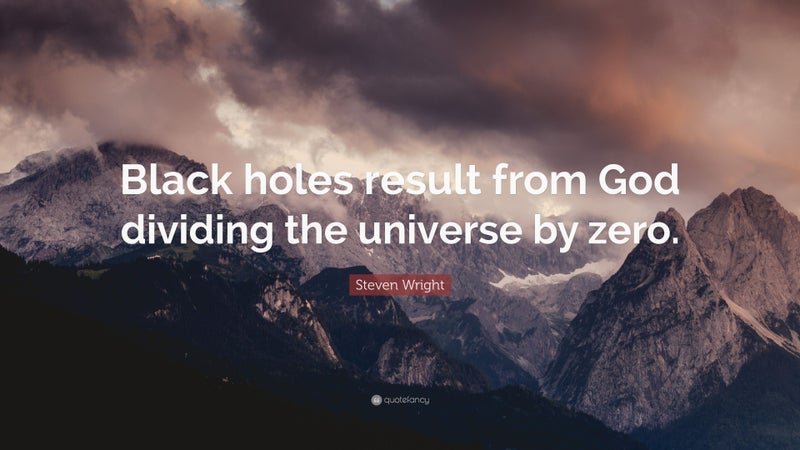






0 件のコメント:
コメントを投稿